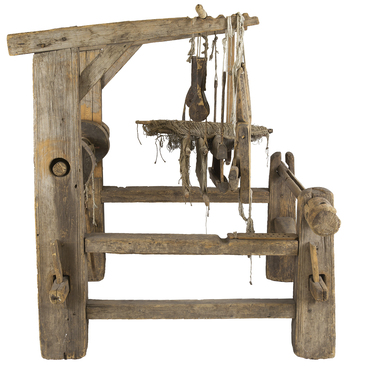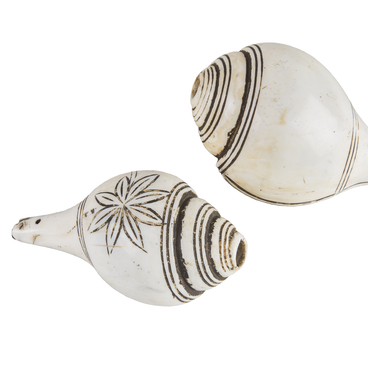Serge is a long wooden pole to which a horse was tied. It was common among many indigenous peoples of Siberia, including the Buryat tribes, to erect them.
Such horse poles always stood outside, so they were made of strong wood that could withstand all kinds of weather. Most often, conifers were used: larch, pine or cedar.
The poles were supposed to be long and powerful so that they attracted attention. Some of them were up to two meters in height, but the serge presented in the museum is of average height, a little more than one and a half meters.
Since ancient times, only men have bred horses. The right side of the yurt and the yard was considered the man’s side, where paddocks for horses and foals, horse harnesses, carts, sleds, as well as the serge were placed. It was installed immediately after the dwelling was completed.
The nomadic Buryat tribes took the serge with them from place to place. It was never given to other families, as it was believed that it could bring bad luck.
Such poles had not only a practical but also a symbolic purpose — they were used in rituals and ceremonies. For example, traditionally, the Western Buryats always erected a birch pole on the second day of the wedding, when a son was getting married. This tradition was observed even when the groom’s family could not build him a separate yurt.
The eldest son’s serge was called a father’s one or personal one. It was high and had a two-tier cone-shaped top. Only the elders, honored guests and the master of the house tied the horse to the top. Young men and women used the lower parts.
A shorter pole without the top part was made for the wedding of the middle son. It was placed a little farther than the father’s serge. When the young couple had children, notches were made on the serge.
Also, the serge served as an invisible boundary between the private territory and the street. Guests were welcomed at the pole. Moreover, when the owners saw their guests off, they helped to untie the horse and get into the saddle.
In some districts of Transbaikal one can still see the poles which were installed several centuries ago.
Such horse poles always stood outside, so they were made of strong wood that could withstand all kinds of weather. Most often, conifers were used: larch, pine or cedar.
The poles were supposed to be long and powerful so that they attracted attention. Some of them were up to two meters in height, but the serge presented in the museum is of average height, a little more than one and a half meters.
Since ancient times, only men have bred horses. The right side of the yurt and the yard was considered the man’s side, where paddocks for horses and foals, horse harnesses, carts, sleds, as well as the serge were placed. It was installed immediately after the dwelling was completed.
The nomadic Buryat tribes took the serge with them from place to place. It was never given to other families, as it was believed that it could bring bad luck.
Such poles had not only a practical but also a symbolic purpose — they were used in rituals and ceremonies. For example, traditionally, the Western Buryats always erected a birch pole on the second day of the wedding, when a son was getting married. This tradition was observed even when the groom’s family could not build him a separate yurt.
The eldest son’s serge was called a father’s one or personal one. It was high and had a two-tier cone-shaped top. Only the elders, honored guests and the master of the house tied the horse to the top. Young men and women used the lower parts.
A shorter pole without the top part was made for the wedding of the middle son. It was placed a little farther than the father’s serge. When the young couple had children, notches were made on the serge.
Also, the serge served as an invisible boundary between the private territory and the street. Guests were welcomed at the pole. Moreover, when the owners saw their guests off, they helped to untie the horse and get into the saddle.
In some districts of Transbaikal one can still see the poles which were installed several centuries ago.



